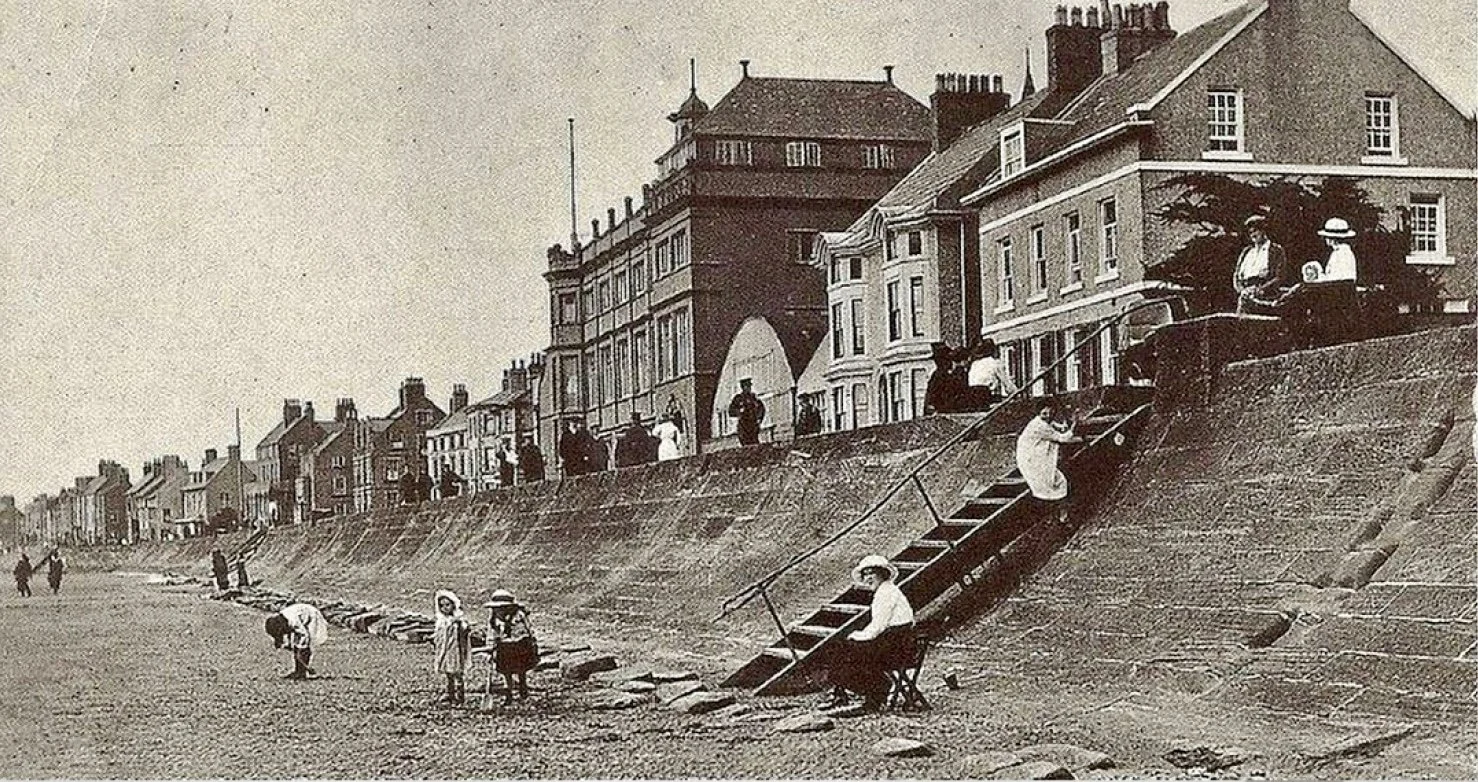the sea wall
Parkgate Parade and sea wall c 1900
With the de-escalation and eventual loss of the shipping trade, Parkgate entered into a period of decline and had to re-invent itself as a community. It was around this time that the present sea-wall was constructed, not for the shipping, but as a parade for fashionable visitors, who had already started to visit from about 1760 for sea-bathing. The first (central) section of wall between the Donkey Stand and The Old Watch House was finished by 1810, and the final section from there to the Boathouse was completed in the 1840s. Most of the stone for the construction of the wall came from the former Old Quay at Neston, derelict since 1704, which was bought by Sir Thomas Mostyn in 1799. Because of the sheer quantity of stone required for this project, however, it is likely that the material was obtained from several different sources..
The original sea wall by Mostyn House, c 1900
Last Updated April 2022



